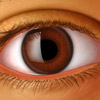- What is macular degeneration?
- Statistics of macular degeneration
- Risk factors for macular degeneration
- Progression of macular degeneration
- Symptoms of macular degeneration
- Clinical examination of macular degeneration
- How is macular degeneration diagnosed?
- Prognosis of macular degeneration
- Treatment of macular degeneration
- References
What is macular degeneration?

The condition is characterised by an individual’s loss of central, high acuity vision, that is, the vision that is used for tasks that require sharp focus, including reading, writing and driving. As visual acuity deteriorates, the individual’s central vision (what they see in the centre of their field of vision) becomes unfocused, although their peripheral vision (the sides of their field of vision) remains unchanged. Although peripheral vision is not affected, macular degeneration can cause visual loss so severe that many individuals with the condition are considered officially blind.
Types of macular degeneration
Macular degeneration can be classified as either:
- Dry macular degeneration (geographic atrophy): Dry macular degeneration is a form of macular degeneration that progresses slowly and causes gradual moderate to severe vision loss. The majority (90%) of macular degeneration cases are dry;
- Wet macular degeneration (neovascular or exudative macular degeneration): Wet macular degeneration is a form of macular degeneration characterised by rapid onset. It is caused by a process known as choroidal neovascularisation, which refers to the growth of abnormal blood vessels under the macular. Only around 10% of macular degeneration is neovascular in origin. However, this form of the condition accounts for the majority of macular degeneration-related blindness;
- Diabetic maculopathy: Diabetic retinopathy or diabetic eye disease is a condition which affects around one third of diabetic patients who have had diabetes for ? 20 years. The condition often involves only degeneration of the peripheral retina (responsible for side vision). However, it sometimes also involves macular degeneration, in which case it is known as diabetic maculopathy.
Macular degeneration is also sometimes caused by eye injury, infection or inflammation.
Macular degeneration (both wet and dry) can also be classified according to the age group of the individuals it affects. The vast majority of macular degeneration is experienced by elderly individuals and is partly caused by the ageing process, known as age-related macular degeneration. In vary rare instances, macular degeneration of genetic origin occurs in young individuals (sometimes children), sometimes called juvenile macular degeneration.
Statistics of macular degeneration

In Australia, it is the leading cause of severe visual impairment in the elderly. Around 15% of the population aged ? 50 years have symptoms of early macular degeneration. In the early stages, the condition does not affect an individual’s vision, but there is an increased risk of developing late or advanced macular degeneration, which causes severe vision loss. The risk of sight-threatening macular degeneration rises exponentially with age. In the 40-49 year age group prevalence is 0.8%, compared to 16% in those older than 90 years.
Over a 20 year period, diabetic retinopathy affects an estimated one third of Australians who suffer from diabetes. Some 7.5% of Australians are diabetes sufferers, so 2.5% of the population will experience diabetic retinopathy in a twenty year time frame. However, it is unclear what proportion of these cases involve degeneration of the macular, and what proportion involve only degeneration of the peripheral retina.
In rare cases, young individuals may develop macular degeneration, and these cases are almost always of genetic origin.
Risk factors for macular degeneration
Age
The risk of macular degeneration increases as a person gets older and the condition usually affects individuals aged 50 years or older. It is commonly referred to as age-related macular degeneration or maculopathy. Risk increases exponentially with increasing age. Those aged ? 90 years have a 25% chance of severe vision loss from macular degeneration compared to a 1-2% risk for those aged ? 50 years.
Smoking
Smoking is a clearly established modifiable risk factor for macular degeneration. For example, results from three large cross-sectional studies reported that smokers are over 3 times more likely to develop age-related macular degeneration compared to non-smokers. There is also evidence that the more an individual smokes, the higher their risk of macular degeneration.
For more information, see smoking and eye health.
Lack of exercise

For more information, see exercise and eye health.
Nutritional factors
There is evidence that a number of dietary factors influence the progression of age-related macular degeneration (how quickly vision deteriorates in an individual who has the condition). For example, one study reported that non-diabetic individuals with a high dietary glycaemic index (a measure of the proportion of carbohydrates in the diet and the extent to which these raise blood sugar levels) were more likely to experience age-related macular degeneration than those with a low dietary glycaemic index.
Eat a healthy, well-balanced diet. Limit your intake of fats, eat oily fish two to three times per week, eat dark green leafy vegetables and fresh fruit daily, and a handful of nuts a week.
For more information, see exercise and nutrition.
Family history
Individuals with a family history of macular degeneration are at a higher risk of developing the condition than those that do not. One study reported more than 10 times increased risk of macular degeneration in individuals with a sibling affected by the condition. Another study determined that there is a 50% chance of developing macular degeneration if a family history of macular degeneration is present.
Genetic conditions
Some individuals are genetically predisposed to macular degeneration and they will typically develop the condition early in life, sometimes in childhood. Macular degeneration of genetic origin is not well understood but is thought to be related to mutation on a number of genes. Further research is needed however to determine the influence of gene mutations in the development of genetic macular degeneration.
Genetic conditions associated with macular degeneration early in life include:
- Best’s disease (a condition characterised by the build up of yellow pigment around the macular, which causes cell damage);
- Stargardt’s disease (a genetically inherited form of macular degeneration which affects children aged 7-12); and
- Sorsby’s dystrophy (a genetic condition affecting children with similar features to wet macular degeneration).
Cataract surgery

You should discuss this issue thoroughly with your eye specialist as each individual case is unique.
Diabetes
Diabetes is the key risk factor of diabetic retinopathy. One third of diabetes sufferers will develop retinopathy within 20 years of having diabetes and some of these cases will involve macular degeneration (others will affect the peripheral retina but not the macular). Diabetic individuals with poorly controlled diabetes, hypertension and hyperlipidaemia (abnormally elevated blood lipid levels) are most at risk.
Possible predisposing factors
For the following factors, studies have shown there to be a possible association between the particular risk factor and the risk of developing macular degeneration:
- Hypertension: Some studies have found an association between hypertension and macular degeneration.
- Factor H: There is new research that there is an association between complement factor H and the development of macular degeneration. Complement factor H is an important part of the complement system, which is an integral part of the body’s immune system.
- Blue iris colour: Blue iris colour has been linked to the development of age-related macular degeneration.
- Sunlight exposure: There is a possible association between sunlight exposure and the development of macular degeneration. This link has been explained by high levels of sunlight exposure causing eye damage, which then might lead to macular degeneration later in life.
Factors not demonstrated to influence risk
There is currently not enough evidence to determine whether or not the following factors influence the risk of macular degeneration:
- Gender;
- Body mass index: Although there is some evidence of an association between increasing BMI and increased risk of macular degeneration;
- Artherosclerosis;
- Cholesterol level: Although there is a plausible association and due to other health benefits, measures to control cholesterol such as eating a well balanced diet low in fat and high in fruit, vegetables and wholegrains is advisable.
Progression of macular degeneration

Dry macular degeneration
Dry macular degeneration is characterised by slow onset and progression. The condition usually remains asymptomatic for many years and can affect one or both eyes. Dry macular degeneration is caused by geographic atrophy (the breakdown of blood vessels) in the retinal region and breakdown of the retinal epithelial pigment, the membrane which separates the choroid and retina and nourishes the retina. Patients with only one eye affected may compensate with their good eye, which may mean that they do not realise their vision is deteriorating for a longer period of time. Vision loss progresses slowly in cases of dry macular degeneration and often takes years to develop.
Wet macular degeneration
Wet macular degeneration is a rapidly progressive condition. In some 30% of individuals with wet macular degeneration only one eye will be affected, however there is a high risk (40% over five years) of the other eye becoming affected. If left untreated wet macular degeneration results in rapid visual deterioration; patients lose an average of three lines of visual acuity (measured by testing which lines of progressively smaller letters an individual can see on an eye chart) after a year.
Wet macular degeneration is caused by a process known as choroidal neovascularisation, or the abnormal growth of neovascular membranes (microscopic blood vessels) underneath the macular. This causes bleeding and scarring in the retina and irreversible damage to the photoreceptors (which receive and process light rays that come into the eye). The neovascular membranes arise in the choroid (the portion of the eye situated between the retina and the schlera) and break through the retinal pigment epithelium which separates the choroid and retina.
Diabetic retinopathy
Retinopathy associated with diabetes results from chronic hyperglycaemia (elevated blood sugar) which causes a range of changes to the blood vessels. These include thickening of the retinal membrane and neovascularisation in the macular region, similar to that which develops in wet macular degeneration. The changes lead to reduced blood flow in the capillaries (small blood vessels) feeding the retina (including the macular) and bleeding in the vitreous, the gel-like substance which fills the section of the eye between the lens and the retina. These changes cause vision loss and ultimately cause blindness if left untreated.
Symptoms of macular degeneration

Dry macular degeneration
Dry macular degeneration is characterised by the following symptoms:
- Gradual loss of visual acuity: Typically experienced as difficulty reading small newsprint or needing a brighter light to read in the early stages of the disease. In later stages, people with dry macular degeneration may experience blurred vision and have difficulty judging distances.
- Distorted colour vision: Colours appear dim or undifferentiated or there may be less contrast between them. For example, individuals with this condition may be unable to match two colours of the same shade.
Individuals who experience these symptoms should visit their general practitioner so that their condition can be assessed. If necessary, the GP will be able to make a referral to an ophthalmologist (an eye specialist).
Wet macular degeneration
Wet macular degeneration is characterised by the following symptoms:
- Rapid loss of visual acuity: Often resulting in distorted vision, for example the individual may begin seeing straight lines as wavy lines and experience difficulty reading small print;
- Central scotoma: Visual blind spots that become larger if they are left untreated.
Individuals experiencing the symptoms listed above should seek immediate medical attention. The symptoms are indicative of wet macular degeneration, which results in rapid visual loss. Diagnosing the condition in the early stages is vital, as once vision is lost it cannot be restored. Treatments for this condition are only effective in preventing further vision loss. A general practitioner will be able to assess the symptoms, and if wet macular degeneration is suspected, will refer the individual for urgent assessment by an ophthalmologist.
Diabetic retinopathy
Diabetic retinopathy is characterised by the following symptoms:
- Reduced central visual acuity;
- Vitrous floaters (opaque areas in the eye’s vitreous which affect vision by casting shadows);
- Loss of colour vision especially the ability to see yellow and blue colours;
- Light flashes.
Clinical examination of macular degeneration

- Logarithm of minimum angle of resolution (logMAR): logMAR is a visual acuity test in which individuals cover one eye before reading from charts containing the letters S, D, K, H, N, O, C, V, R and Z;
- Snellen chart: The Snellen chart is a chart containing letters of different sizes which is used to assess visual acuity;
- Amsler grid: The Amsler grid is a grid of intersecting vertical and horizontal lines with a dot in the middle. Individuals look at the dot and indicate any lines that appear blurred or faded. Seeing blurred or faded lines indicates macular degeneration; and
- Colour vision test: The colour vision test is a test which assesses the individual’s ability to distinguish different colours.
How is macular degeneration diagnosed?
To diagnose macular degeneration, a doctor will examine the eyes using a microscope. A very bright light called a slit lamp will be shone into the eye while the doctor performs the examination. Different types of macular degeneration cause different microscopic changes to the eye, and the doctor will look for these as they examine the eye.
Dry macular degeneration
When the examination reveals the following features, it indicates the individual is developing dry macular degeneration:
- Hyper- or hypo-pigmentation of the retina (sections of the retina which are noticeably darker or lighter than the remainder);
- Mottled discolouration of the macula;
- Large yellow drusen (fatty deposits) around the macula;
- Soft drusen;
- Break down of the retinal pigment epithelium, (the membrane which separates the retina from the choroid and supplies nutrients to the retina).
Wet macular degeneration
When the examination reveals the following features, it indicates the individual is developing wet macular degeneration:
- Subretinal fluid (accumulation of fluid around the retina);
- Subretinal haemorrhage (bleeding around the retina);
- Retinal scarring.
Diabetic retinopathy

- Microaneurysms (stretching of microscopic blood vessels);
- Haemorrhages;
- Hard exudates (small yellow deposits which form from blood vessels leaking into the retina);
- Change to the veins;
- Formation of new veins; and
- Retinal thickening.
Other tests
If the examination reveals macular degeneration, other tests which may be performed include:
- Fluoresein angiography: An x-ray of the eye is taken after a fluorescent dye is injected into the blood vessels. This test may be used if wet macular degeneration is suspected. It allows the doctor to assess the extent, size and location of neovascularisation (abnormal blood vessel growth) and the extent to which blood is leaking from the blood vessels. The test may also be used to rule out non-macular degenerative causes of visual impairment;
- Optical coherence tomography: A technique in which a laser is used to create an image of the eye or other organs. It may be performed if the test is available. It is used to assess the extent to which the retina has thickened and fluid has accumulated in the tissues of the retina
- Idyocyanine green angiography: A procedure similar to fluorescien angiography but using a different type of dye, may also be used to help the doctor assess the extent of abnormal blood vessel growth. It is usually not necessary as fluoresein angiography will provide this information.
Prognosis of macular degeneration

Treatment options depend on the type of macular degeneration. It is not usually possible to restore vision, and treatment is focused on preventing further vision deterioration.
There is currently no effective treatment for dry macular degeneration. In these individuals, early detection and prevention of further vision loss is the key strategy for managing the condition.
There are several treatments which are effective in preventing vision loss and in some cases partially restoring vision in individuals with wet macular degeneration (outlined below). Due to the rapid onset of the condition, treatment must be instituted quickly, before scarring occurs on the retina. Early detection is therefore vital.
There are also treatments which can prevent vision loss in cases of diabetic maculopathy.
Macular degeneration is a painless condition but the vision loss it entails is disabling. The condition therefore has considerable implications for a person’s quality of life. While macular degeneration does not cause black blindness as individuals retain their peripheral vision, vision loss is often so severe that individuals with advanced macular degeneration are officially classified as legally blind. Vision loss can prevent a person carrying out previously taken for granted tasks such as driving, reading and personal care. They may need to modify aspects of their lifestyle, for example it may be necessary to walk or catch public transport instead of driving, or become dependent on someone else’s care. Individuals may become distressed at the prospect of total blindness and where treatment is possible, it is unpleasant (e.g. involving injections into the eye), involves frequent clinic attendance and often results in side effects.
A significant proportion of individuals with macular degeneration (30%) experience emotional disorders including depression and anxiety, as a result of the loss of independence and the difficulty accomplishing basis tasks, which results from vision loss. Some 12% of individuals experience a syndrome known as Charles Bonnet syndrome, a visual disorder characterised by visual hallucinations. Often they are reluctant to discuss their hallucinations with a health professional, for fear they will be perceived as psychologically disturbed. Visual loss is also associated with a higher incidence of falls and associated morbidity (e.g. hip fractures). Its effect may be worsened if the affected individual also experiences deterioration in hearing and mobility.
Treatment of macular degeneration

Dry macular degeneration
There are currently no treatments available to prevent further vision loss from dry macular degeneration. Management of the condition focuses on controlling risk factors for the disease. To reduce further vision loss from dry macular degeneration, individuals should:
- Quit smoking;
- Control blood pressure;
- Eat a diet rich in fruit and vegetables;
- Wear a hat and sunglasses when exposed to sunlight;
- Keep a healthy lifestyle, control your weight and exercise regularly.
It should be noted however that there is no scientific evidence demonstrating that blood pressure control or sunlight exposure cause the progression of macular degeneration. These measures are precautionary.
Individuals should also take measures to reduce the impact of the vision loss they experience. They should discuss the use of visual aids with the doctor as well as how to create a conducive home environment. Measures include:
- Getting a low vision assessment;
- Improving lighting in the home;
- Using magnifiers and a reading light for reading;
- Using other visual enhancers such as a reading telescope;
- Accessing mobility and orientation training if needed.
Individuals who experience serious vision loss which disables them will be registered as vision impaired or blind. This will help them access support groups and services which can assist them to adapt to their loss of vision.
Antioxidant supplementation
It is sometimes reported that taking antioxidant supplements protects an individual from macular degeneration although there is no scientific evidence that antioxidant supplementation prevents or delays the onset of the condition. However, there is evidence that high dose anti-oxidant supplements plus zinc supplements reduce further vision loss in cases of advanced macular degeneration.
Wet macular degeneration
Controlling risk factors and adapting to vision loss are similarly important components of wet macular degeneration management. There are also a range of treatments aimed at preventing and reversing neovascularisation. These are effective in preventing further vision loss, and in some cases partially restoring vision.
Anti-vascular endothelial growth factor drugs
Anti-vascular endothelial growth factor drugs target a substance in the body called Vascular endothelial growth factor (VEGF). VEGF is the major stimulant of choroidal neovascularisation or abnormal blood vessel growth in wet macular degeneration, thus blocking the action of VEGF prevents neovascularisation. Drugs which block VEGF have recently been demonstrated effective in preventing vision loss and in some cases improving vision in patients with wet macular degeneration.
Ranibizumab (Lucentis)
Lucentis is a drug which targets and binds to VEGF Type A. In doing so, it prevents VEGF-A binding to its receptors VEGF-1 and VEGF-2 which in turn prevents abnormal blood vessel growth. In Australia, Lucentis was approved for treatment of macular degeneration in 2008.
Scientific research has shown Lucentis to be highly effective in preventing visual loss and to improve vision in a significant proportion of individuals treated. In two studies about 95% of patients receiving Lucentis maintained their vision for the two years in which they were studied, compared to 62% of individuals not receiving Lucentis treatment. Around one third of those treated with Lucentis experienced improved visual acuity, compared to 5% of those not receiving the medicine.
Bevacizumab (Avastin)
Prior to the approval of Lucentis, Avastin was commonly used to treat macular degeneration in Australia. There is some evidence from small studies that the drug is affective, however further research is needed to confirm this. Avastin is not currently approved for the treatment of macular degeneration in Australia.
Laser therapy

Photodynamic laser therapy is the preferred method as it causes less damage to the retina than conventional argon laser treatment, another type of laser treatment for macula degeneration.
Photodynamic laser therapy involves a doctor injecting the individual undergoing investigation with photosensitising dye, that is, a dye which is sensitive to light rays. The section of the eye which is damaged by abnormal blood vessel growth will absorb most of this dye, meaning that blood vessels in the surrounding section of the retina will not be exposed to the dye. The dye is activated by a low-powered diode laser which is shone into the eye. When the rays of light enter the eye, they activate the photosensitising dye which then destroys only the cells which have absorbed the dye (the cells of the damaged blood vessels which are causing macular degeneration). Other cells in the retina are not destroyed because they have not absorbed the dye.
Individuals will be monitored regularly (three monthly) following treatment and usually require 3-5 treatment sessions to completely resolve abnormal blood vessel growth. This treatment has been shown to reduce the risk of losing ? 3 lines of visual acuity in two years by 20%, and the risk of losing ?6 lines of visual acuity within two years by 34%. However, the treatment is rarely effective in maintaining the necessary vision for reading or driving.
Macular translocation surgery
Macular translocation surgery involves detaching the retina and moving it to a section of the eye which is not damaged by abnormal blood vessel growth. There is currently limited evidence of the effectiveness of this procedure. Available evidence indicates that it carries a high risk of adverse side effects. For example, more than 20% of individuals undergoing the surgery experienced retinal detachment following the surgery. Macular translocation surgery is therefore not recommended as a routine treatment for wet macular degeneration.
Radiotherapy
There is some evidence that external bean radiotherapy is effective in preventing abnormal blood vessel growth in the retina. However, because this treatment has many, serious side effects it is not recommended.
Diabetic maculopathy
The following treatments are effective in preventing macular degeneration in cases caused by diabetes:
- Focal macular laser photocoagulation: A procedure in which blood vessels are closed using a high powered laser is an effective treatment in cases of proliferative degeneration involving severe macular oedema. This treatment is more effective when used for treating diabetic eye disease affecting the peripheral retina;
- Grid photocoagulation: A procedure in which a high powered laser is used to close abnormal blood vessels. The laser is moved in a grid pattern, targeting zones of retinal thickening. It is effective in treating cases of diffuse diabetic maculopathy involving macular oedema.
- Triamcinolone acetonide (Kenacourt A10): A medicine injected into the eye similar to Lucentis. It improves visual acuity and reduces macular thickness in patients with diabetic macular oedema (excessive fluid accumulation). It should be noted however that this remains an off-label treatment, that is, the medication is not approved for treatment of eye conditions. Treatment generally involves repeat injections and significant adverse reactions.
More information
 |
For more information on age related macular degeneration, including the effect of smoking, exercise and nutrition on eyes, as well as some useful animations and tips to keep eyes healthy, see Macular Degeneration. |
References
- Age-related macular degeneration [online]. Moorfields Eye Hospital, National Health Service Foundation Trust. [cited 3 March 2016]. Available from URL: [URL Link]
- Chiu CJ, Milton RC, Gensler G, Taylor A. Association between dietary glycemic index and age-related macular degeneration in nondiabetic participants in the Age-Related Eye Disease Study. Am J Clin Nutr. 2007; 86(1): 180-8. [Abstract | Full Text]
- Chakravathy U. Age related macular degeneration. BMJ. 2006; 333(7574): 869-70. [Abstract]
- Guymer RH. Managing neovascular age-related macular degeneration: A step into the light. Med J Aust. 2007; 186(6): 276-7. [Full Text]
- Mendrinos E, Stangos AN, Pournaras CJ. Diabetic Retinopathy. BMJ Clin Evid [online]. 23 November 2007 [cited 11 January 2010]. [Full Text]
- Macular degeneration [online]. National Health Service; 5 January 2010 [cited May 4 2011]. Available from: [URL Link]
- Taylor HR, Keeffe JE, Vu HT, Wang JJ, Rochtchina E, Pezzullo ML, et al. Vision loss in Australia. Med J Aust. 2005; 182(11): 565-8.[Abstract | Full Text]
- VanNewkirk MR, Nanjan MB, Wang JJ, Mitchell P, Taylor HR, McCarty CA. The prevalence of age-related maculopathy: The visual impairment project. Ophthalmology. 2000; 107(8): 1593-600. [Abstract]
- Weih LM, VanNewkirk MR, McCarty CA, Taylor HR. Age-specific causes of bilateral visual impairment. Arch Ophthalmol. 2000; 118(2): 264-9. [Abstract]
- Jackson CL, Hirst L, de Jong IC, Smith N. Can Australian general practitioners effectively screen for diabetic retinopathy? A pilot study. BMC Fam Pract. 2002; 3: 4. [Abstract]
- Klein BE, Klein R, Lee KE, Moore EL, Danforth L. Risk of incident age-related eye diseases in people with an affected sibling : The Beaver Dam Eye Study. Am J Epidemiol. 2001; 154(3): 207-11. [Abstract]
- Smith W, Assink J, Klein R, Mitchell P, Klaver CC, Klein BE, et al. Risk factors for age-related macular degeneration: Pooled findings from three continents. Ophthalmology. 2001; 108(4): 697-704. [Abstract]
- Thornton J, Edwards R, Mitchell P, Harrison RA, Buchan I, Kelly SP. Smoking and age-related macular degeneration: A review of association. Eye (Lond). 2005; 19(9): 935-44. [Abstract]
- Knudtson MD, Klein R, Klein BE. Physical activity and the 15-year cumulative incidence of age-related macular degeneration: the Beaver Dam Eye Study. Br J Ophthalmol. 2006; 90(12): 1461-3. [Abstract]
- Seddon JM, Cote J, Davis N, Rosner B. Progression of age-related macular degeneration: association with body mass index, waist circumference, and waist-hip ratio. Arch Ophthalmol. 2003; 121(6): 785-92. [Abstract | Full Text]
- Morris B, Imrie F, Armbrecht AM, Dhillon B. Age-related macular degeneration and recent developments: New hope for old eyes? Postgrad Med J. 2007; 83(979): 301-7. [Abstract]
- Cugati S, Mitchell P, Rochtchina E, Tan AG, Smith W, Wang JJ. Cataract surgery and the 10-year incidence of age-related maculopathy: The Blue Mountains Eye Study. Ophthalmol. 113(11): 2020-5. [Abstract]
- Klein R, Klein BE, Wong TY, Tomany SC, Cruickshanks KJ. The association of cataract and cataract surgery with the long-term incidence of age-related maculopathy: The Beaver Dam eye study. Arch Ophthalmol. 2002; 120(11): 1551-8. [Abstract]
- Guymer RH, Chong EW. Modifiable risk factors for age-related macular degeneration. Med J Aust. 2006; 184(9): 455-8. [Abstract | Full Text]
- Constable IJ. Age-related macular degeneration and its possible prevention. Med J Aust. 2004; 181(9): 471-2. [Abstract]
- Bressler NM. Age related macular degeneration. New hope for a common problem comes from photodynamic therapy. BMJ. 2000; 321(7274): 1425-7. [Full Text]
- Mitchell P, Korobelnik JF, Lanzetta P, Holz FG, Pruente C, Schmidt-Erfurth UM, et al. Ranibizumab (Lucentis) in neovascular age-related macular degeneration: Evidence from clinical trials. Br J Ophthalmol. 2010; 94: 2-13. [Abstract]
- Morello C. Etiology and natural history of diabetic retinopathy: An overview. Am J Health Syst Pharm. 2007; 64(17 Suppl 12): S3-7. [Abstract]
- Evans JR. Ginkgo biloba extract for age-related macular degeneration. Cochrane Database Syst Rev. 2000;(2): CD001775. [Abstract]
- Age related Eye Disease Study Group. A randomized, placebo-controlled, clinical trial of high-dose supplementation with vitamins C and E, beta carotene, and zinc for age-related macular degeneration and vision loss: AREDS report no. 8. Arch Ophthalmol. 2001; 119(10): 1417-36. [Abstract]
- Wormald R, Evans J, Smeeth L, Henshaw K. Photodynamic therapy for neovascular age-related macular degeneration. Cochrane Database Syst Rev. 2007; (3): CD002030. [Abstract]
- Eandi CM, Giansanti F, Virgili G. Macular translocation for neovascular age-related macular degeneration. Cochrane Database Syst Rev. 2008; (4): CD006928. [Abstract]
- Sivagnanavel V, Evans JR, Ockrim Z, Chong V. Radiotherapy for neovascular age-related macular degeneration. Cochrane Database Syst Rev. 2004; (4): CD004004. [Abstract]
- Product Information: Lucentis. North Ryde, NSW: Novartis Pharmaceuticals Pty Ltd; 24 December 2008.
- Rosenfeld PJ, Brown DM, Heier JS, Boyer DS, Kaiser PK, Chung CY, et al. Ranibizumab for neovascular age-related macular degeneration. N Engl J Med. 2006; 355(14): 1419-31. [Abstract | Full Text]
- Brown DM, Kaiser PK, Michels M, Soubrane G, Heier JS, Kim RY, et al. Ranibizumab versus verteporfin for neovascular age-related macular degeneration. N Engl J Med. 2006; 355(14): 1432-44. [Abstract | Full Text]
- Evans JR, Henshaw K. Antioxidant vitamin and mineral supplements for preventing age-related macular degeneration. Cochrane Database Syst Rev. 2008; (1): CD000253. [Abstract]
- Smith W, Mitchell P. Family history and age-related maculopathy: The Blue Mountains Eye Study. Aust NZ J Ophthalmol. 1998; 26(3): 203-6. [Abstract]
- Dong LM, Stark WJ, Jefferys JL, Al-Hazzaa S, Bressler SB, Solomon SD, et al. Progression of age-related macular degeneration after cataract surgery. Arch Ophthalmol. 2009; 127(11): 1412-9. [Abstract]
- Coleman HR, Chan CC, Ferris FL 3rd, Chew EY. Age-related macular degeneration. Lancet. 2008; 377(9652): 1835-45. [Abstract]
All content and media on the HealthEngine Blog is created and published online for informational purposes only. It is not intended to be a substitute for professional medical advice and should not be relied on as health or personal advice. Always seek the guidance of your doctor or other qualified health professional with any questions you may have regarding your health or a medical condition. Never disregard the advice of a medical professional, or delay in seeking it because of something you have read on this Website. If you think you may have a medical emergency, call your doctor, go to the nearest hospital emergency department, or call the emergency services immediately.







